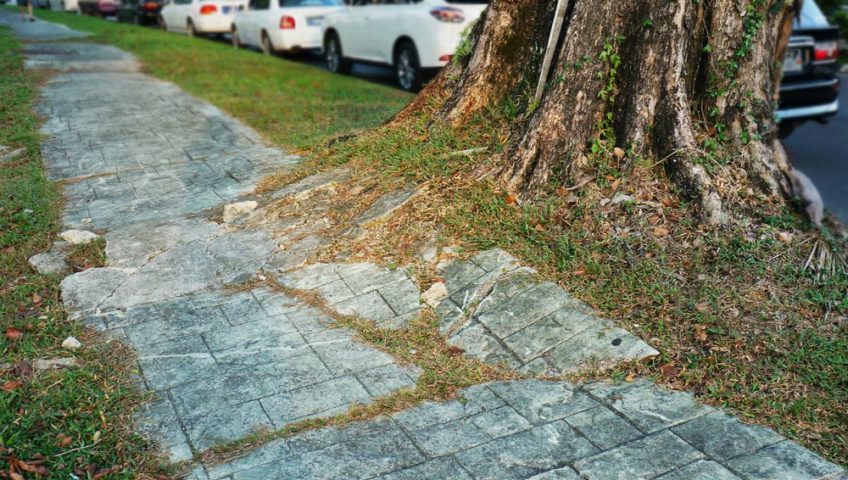Although trees are a wonderful part of nature, they can grow to enormous heights, and those with large trunks and lots of branches can quickly become dangerous. If you’re worried about a tree on your property, it’s important to quickly take action for your own safety as well as that of those around you. Read on to find out some of the indicators of a hazardous tree and what to do if you spot them.
1. Hanging or Damaged Limbs
One of the most visible signs of a troublesome tree is broken limbs. If you can see branches which are hanging loose or are damaged in any way, it may be time to call an arborist. Things like rot, fungus, splits in bark or cracks along the branches can signify a problem. Do not stand directly under the tree (falling branches can be very dangerous) or attempt to remove the damaged branches yourself as you may cause the issue to escalate further.
2. Dead Limbs
It may seem obvious, but trees with dead limbs can pose similar threats. Not only will these dead limbs eventually fall and potentially cause harm to people or surrounding buildings, but they’re also a sign of significant damage to the tree. Potential causes of dead limbs include root damage as well as a disease or pest invasion.
3. Leaning Tree
If a tree is planted in an area that doesn’t get a lot of light, it will naturally grow towards a light source, causing it to lean. In these scenarios, a leaning tree is quite safe. However, if a previously upright tree has started to lean (after a storm, for example), this suggests its root system is no longer structurally sound and could topple over.
4. Root Damage
This can be a major concern because it’s hard to spot the signs, meaning it’s often too late to save the tree once root damage has occurred. Damage to the roots is usually caused by construction or building work, meaning the issue could have been caused long before you even lived in the home.
Roots are vital to the tree’s ability to intake water, so if the roots are damaged, the tree will begin to dry out and wilt. Eventually, the whole tree could die off, so if you spot thinning foliage, undersized leaves and limited growth, it’s important to contact an arborist immediately. While they may not be able to save the tree, they can remove it safely.
What to Do Next
Once you have identified the hazards surrounding certain trees, what can you do about them? Firstly, if the tree is posing a danger to you or your property, it is important to contact a tree service immediately. Summerland Tree Services offers tree lopping as well as tree removal. In serious cases, we can accommodate emergency tree removal, so don’t panic if a nearby oak is starting to look treacherous. Our aim is to help protect people and the places they hold dear from the danger of falling trees and we are well equipped to do that for you, so make sure you get in contact today.

